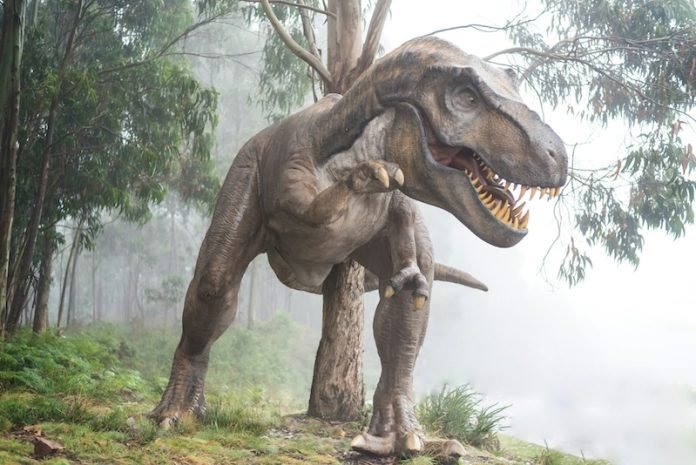
In the world of dinosaur discovery, a new chapter has been added thanks to the work of Sebastian Dalman and his team.
They’ve introduced us to a previously unknown species of tyrannosaur, named Tyrannosaurus mcraeensis, found in what is now New Mexico, USA.
This discovery is stirring up excitement because it seems we’ve found a dinosaur that was very closely related to the famous Tyrannosaurus rex, perhaps its closest known relative.
The key to this discovery was a fossilized partial skull found in the Hall Lake Formation in New Mexico. Initially, experts thought this skull belonged to T. rex, especially since it matched the size of T. rex, which could grow up to 12 meters long.
However, upon closer examination, Dalman and his team noticed several small but significant differences in the skull’s shape and the way its bones fit together. These differences were enough to convince them that they were dealing with a new species altogether.
Dating the fossil was crucial to understanding its place in dinosaur history. The area where T. mcraeensis was found, alongside other dinosaur fossils, has been dated to between 66 and 75 million years ago.
This timing suggests that T. mcraeensis roamed the earth around 71 to 73 million years ago, which is a few million years before T. rex made its appearance.
What’s really interesting is how T. mcraeensis fits into the dinosaur family tree. Analysis suggests that this new species and T. rex were sister species, making T. mcraeensis the closest known relative to the king of dinosaurs.
This discovery sheds light on the origins of the tyrannosaur lineage, Tyrannosaurini, suggesting it may have begun in southern Laramidia. Laramidia, an island continent that existed from about 100 to 66 million years ago, stretched from what is now Alaska to Mexico.
The researchers propose that the Tyrannosaurini, including T. mcraeensis, achieved their giant sizes by around 72 million years ago.
This was a time when other giant dinosaurs, such as ceratopsians (horned dinosaurs), hadrosaurs (duck-billed dinosaurs), and titanosaurs (massive long-necked dinosaurs), also lived in southern Laramidia.
The growth of these giant predators might have been driven by the sizes of the herbivores they hunted, suggesting an arms race of sorts in the evolution of size in this prehistoric ecosystem.
This discovery not only adds a new member to the tyrannosaur family but also provides valuable insights into how and where these formidable predators evolved.
It paints a picture of a time when giants walked the earth, each species influencing the evolution of the others in their shared environment.
The research findings can be found in Scientific Reports.
Copyright © 2024 Knowridge Science Report. All rights reserved.



